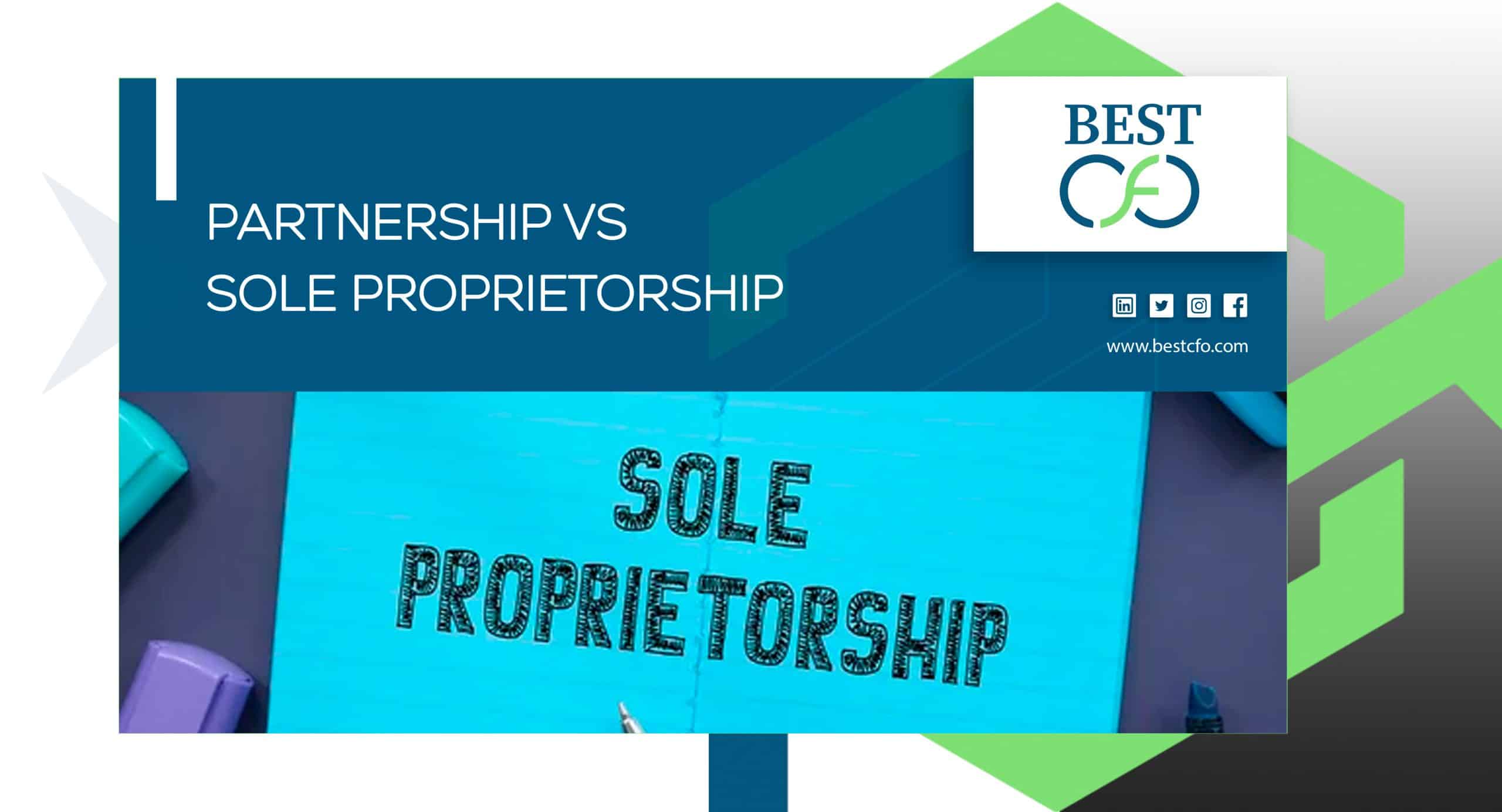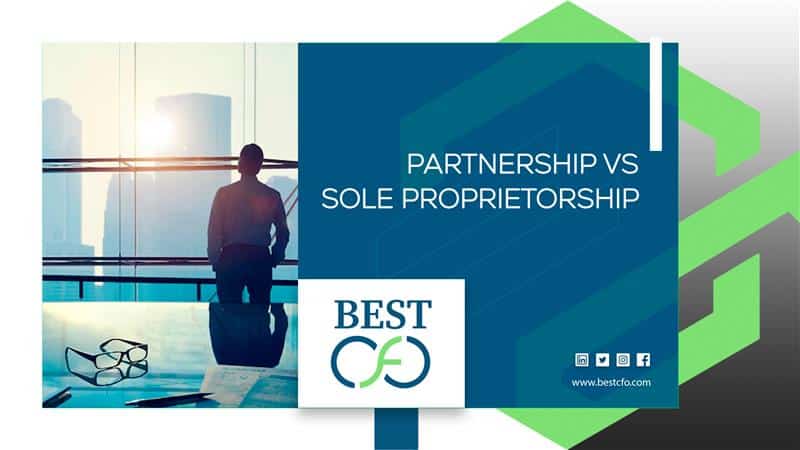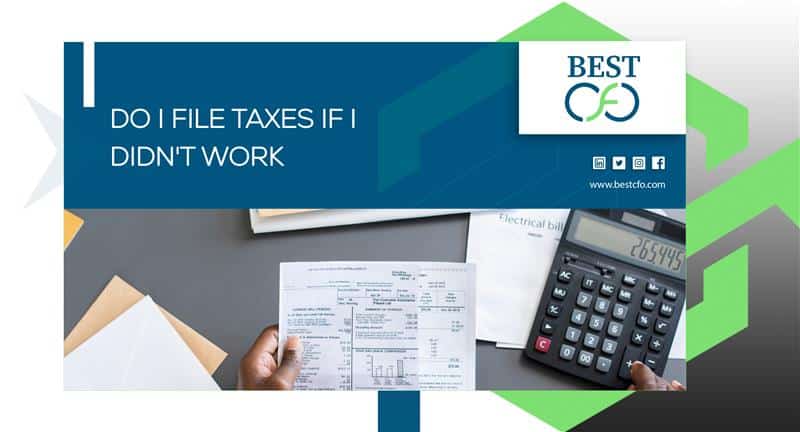
| Getting your Trinity Audio player ready... |
Partnership vs Sole Proprietorship: Understanding The Key Differences
When beginning a small business, one of the earliest and perhaps the most significant decisions you will encounter is deciding the appropriate type of ownership. Partnerships vs sole proprietorships are two of the more usual types of ownerships. They both have their characteristics, advantages, and drawbacks.
In this article, we will discuss the major differences between the two setups so that you can make the best decision for your business journey.
Understanding The Partnership
Partnership is a business owned by two or more partners who come together to operate a company collectively. They typically divide duties, profits and losses, and other business activities. Terms of how the business operates are typically dictated in a partnership agreement. Such an agreement stipulates how partners will divide money, deal with decisions, and resolve problems.
Partnerships are wonderful for individuals who like to share their money, skills, and ideas. However, they do have mutual risks and liabilities.
Types of Partnership
There are several kinds of partnerships. Each offers different levels of responsibility and liability protection.
General Partnership
A general partnership is the most basic form. In this setup, each partner takes part in running the business and shares equal responsibility. That includes business debts/obligations. All partners have joint and several liability, meaning they can be held responsible together or separately for what the business owes.
Joint Venture
A joint venture is like a temporary partnership. Two or more parties come together for a specific project or goal. Once the job is done, the partnership usually ends.
Limited Partnership (LP)
LP includes at least one general and one limited partner. The general partner manages day-to-day business and is exposed to unlimited personal liability. The limited partner provides money and doesn’t get involved in business decisions and enjoys limited liability.
Limited Liability Partnership (LLP)
An LLP provides increased protection of liabilities. It provides a degree of autonomy to all the partners in the running of the company without being personally responsible for the actions of the others. This provides a safer choice for professionals such as accountants or solicitors…
Advantages and Drawbacks of Partnerships
Pros of Partnerships
- Ease of formation/setup with lower formation costs
- Shared decision-making authority and workload
- Ability to combine talents and ideas
- More ways to get funding/financing
- Tax advantages/deductions through pass-through taxation
In pass-through taxation, the business itself doesn’t pay taxes. Instead, profits go to each partner, who pays personal income tax on their share.
Cons of Partnerships
- Shared control can lead to disagreements
- Joint and several liability exposes all partners to legal and money risks
- Requires clear partnership agreements to avoid future issues
- Each partner’s actions can affect the whole business
Understanding The Sole Proprietorship
Sole proprietorship is the most basic type of business structure. It’s owned and operated by one person — the single owner of the business. This one individual makes decisions and receives all of the profits. It’s a popular choice of business structure for small businesses due to the ease of starting up and running it.
There is no legal distinction between the business and owner. This implies the owner is personally liable for all business obligations/debts.

Types of Sole Proprietorship
Self-Employment
Many people work for themselves in jobs like consulting, landscaping, or coaching. These self-employment setups fall under sole proprietorships.
Freelancer
Freelancers — such as writers, designers, and developers — often work with different clients under their own name without forming a company.
Franchise
Some franchises are run as sole proprietorships, especially when a person buys into a known brand but still operates as a single owner.
Advantages and Drawbacks of Sole Proprietorship
Pros of Sole Proprietorship
- Operational simplicity and total decision-making authority
- Ease of formation/setup with fewer paperwork requirements
- Complete control over profits and losses
- Fewer ongoing business compliance needs
- Direct tax filing through personal income tax or self-employment taxes
Cons of Sole Proprietorship
- Unlimited personal liability for all business debts/obligations
- Harder to raise funding/financing
- May lack outside ideas or support
- Business ends if the single owner dies or quits
Partnership vs Sole Proprietorship: Key Difference
Let’s break down the key ways partnership vs sole proprietorship differ:
Structure
- Sole proprietorship has one person running the show.
- A partnership has two or more owners/partners sharing shared ownership.
Liabilities
- Sole proprietors face unlimited personal liability for the business.
- In a general partnership, all partners share joint and several liability.
- LPs and LLPs offer varying degrees of limited liability or liability protection.
Ownership
- Sole proprietorships are run by a single owner with full control.
- Partnerships involve shared ownership and joint decision-making.
Final Thoughts
Selecting a partnership or a sole proprietorship will depend on your goals for the business, your risk toleration, and personal choice. If you prefer to work by yourself and have complete control, a sole proprietorship will suit you best. If you prefer to collaborate and divide the work, a partnership might best fit your needs.
Be sure to consider business tax filing, registration, the cost of formation, and the types of business licenses and permits you will require. It is also a good idea to obtain an Employer Identification Number (EIN) to assist in taxation and the hiring of employees.
Every setup comes along with its benefits and drawbacks. Knowing these will enable you to decide the best direction for your business journey.
FAQs
Q1: Do I need to register my sole proprietorship?
A: Usually, no. But depending on your state or city, you may need to register your business name or get specific business licenses and permits.
Q2: How is a partnership taxed?
A: Most partnerships use pass-through taxation. The business doesn’t pay taxes — instead, profits go to each partner, who pays personal income tax on their share.
Q3: What’s the biggest risk of a sole proprietorship?
A: Unlimited personal liability. If the business owes money or gets sued, your personal stuff (like your house or car) could be at risk.
Q4: Is it cheaper to start a sole proprietorship or a partnership?
A: Both have low formation costs, but sole proprietorships are usually cheaper and have fewer paperwork requirements.
Q5: Can a sole proprietor hire employees?
A: Yes! But you’ll need an EIN and follow ongoing business compliance rules, like paying employment taxes.
Related Posts
The Top 30 Netiquette Rules How Not to Be That Person Online
Tangible vs Intangible Assets: What’s The Difference? Let’s be real: asset talk doesn’t exactly scream…
Do You Need To File Taxes If You Didn’t Work?
Stock Analysis 101: Revenue Forecasting and Growth In the rapidly evolving world of business today,…
What Is a Debit Card? Complete Pros & Cons of a Debit Card
What Are the Most Important KPI For Finance Department To Track In today’s fast-moving economy,…
Patent vs Trademark vs Copyright: What’s The Difference Between Them?
What Are the Most Important KPI For Finance Department To Track In today’s fast-moving economy,…
 Demos
Demos  Colors
Colors  Docs
Docs  Support
Support 














